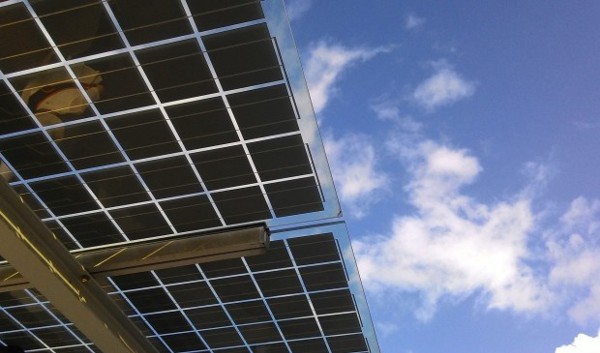As we covered in our last solar policy blog, 2015 closed on a huge high note for the U.S. solar industry at the national level: a surprise five-year extension of the federal investment tax credit (ITC). Because this tax credit effectively reduces the up-front costs of going solar, the extension could translate into 25 additional gigawatts (GW) of solar power installations nationwide through 2020 according to projections by Greentech Media — more than all the solar power installed in the U.S. to date!
Although this was cause for lots of justifiable celebration, there are still crucial battles ahead for solar policy at the state level. Because state public utility commissions (PUCs) decide the rates that homeowners get paid for their solar power generation, they can determine whether going solar makes economic sense over the lifetime of the investment no matter what the up-front costs are. The particulars of these “net energy metering” (NEM) rules are a source of sometimes-bitter disputes between solar policy advocates and utilities who, unsurprisingly, often argue that rates paid for solar power should be lowered.
Last month saw several stories demonstrating that these cases will have implications for solar markets all over the map, with positive news shining through in some states but negative news clouding the outlook in many others:
Sunshine:
- In California, the biggest solar market in the country, the PUC announced a proposed decision to continue the state’s successful retail NEM program — albeit with new one-time interconnection fees of $75-$150 and “non-bypassable” fees of $0.02.-$0.03 per kilowatt-hour (kWh). While the PUC presented this as a compromise between solar and the utilities, the solar industry seemed much happier with the ruling, with a spokesman for the California Solar Energy Industries Association saying that the proposal “is consistent with Gov. Brown’s strong commitment to transforming our energy system into one that is based on clean, local power.”
- Mississippi’s Public Service Commission (PSC) voted to become the 45th state to adopt a NEM rule after five years of studying the issue. The rate paid for excess solar generation will be originally set at 7 to 7.5 cents per kWh — more than the utilities proposed, although less than the full 10 cent retail rate — and then “replaced” with a new rate once “actual benefits” to the grid have been determined.
Clouds:
- Nevada’s PUC voted unanimously to approve new rules that would pay customers only the wholesale cost of electricity per kilowatt-hour — about 75% less than the full retail charge paid by customers — and increase fixed charges paid by solar customers. The results, which in an unusual step will be applied retroactively (i.e. even to customers who installed systems under the previous retail net metering rate), will dramatically weaken the economics of home solar in what was previously one of the fastest-growing solar states in the country. In response, some installers are threatening to quit doing business in the state, and advocacy group The Alliance for Solar Choice (TASC) is considering legal action.
- South Carolina’s state-owned utility Santee Cooper approved new “standby fee” charges on solar customers along with lower rates that the utility will pay for residential solar generation. While the utility also introduced a policy of $0.65 per watt rebate for residential and commercial solar installations, a spokesperson for the Conservation Voters of South Carolina called the changes “punitive” towards solar on the balance.
- Louisiana utility Entergy confirmed that it would officially end their NEM program on January 1, 2016 and reduce rates paid for new residential solar installations to an “avoided cost” calculation based on wholesale rates. The move is in response to a state PSC decision earlier in 2015 to cap households eligible for the NEM rate at just 0.5% of the utility’s peak load — one of the lowest caps in the country. The move could significantly curtail growth in what is currently the 10th largest U.S. solar market.
While maintaining bright green California as a strong residential solar market was practically a “must win” for the industry, setbacks in more politically conservative states in the southeast and southwest show how fragile solar policy progress can be when faced with well-financed opposition from utility and fossil fuel interests. With about over half of U.S. states either changing or studying changes in NEM rules as of the third quarter in 2015, we can expect to see these solar policy battles continue throughout 2016.
John Atkinson is the director of regulatory affairs for an alternative fuels startup and previously worked as a senior associate focused on energy issues at a DC-based consultancy. He has provided analysis at the intersection of energy, technology, and policy for clients ranging from Fortune 100 companies to startups, covering energy sources ranging from oil and gas to solar and other renewables. He currently lives in Los Angeles in a solar-roofed house, and composes electronic music for live performance and film when not geeking out on energy (or basketball).
